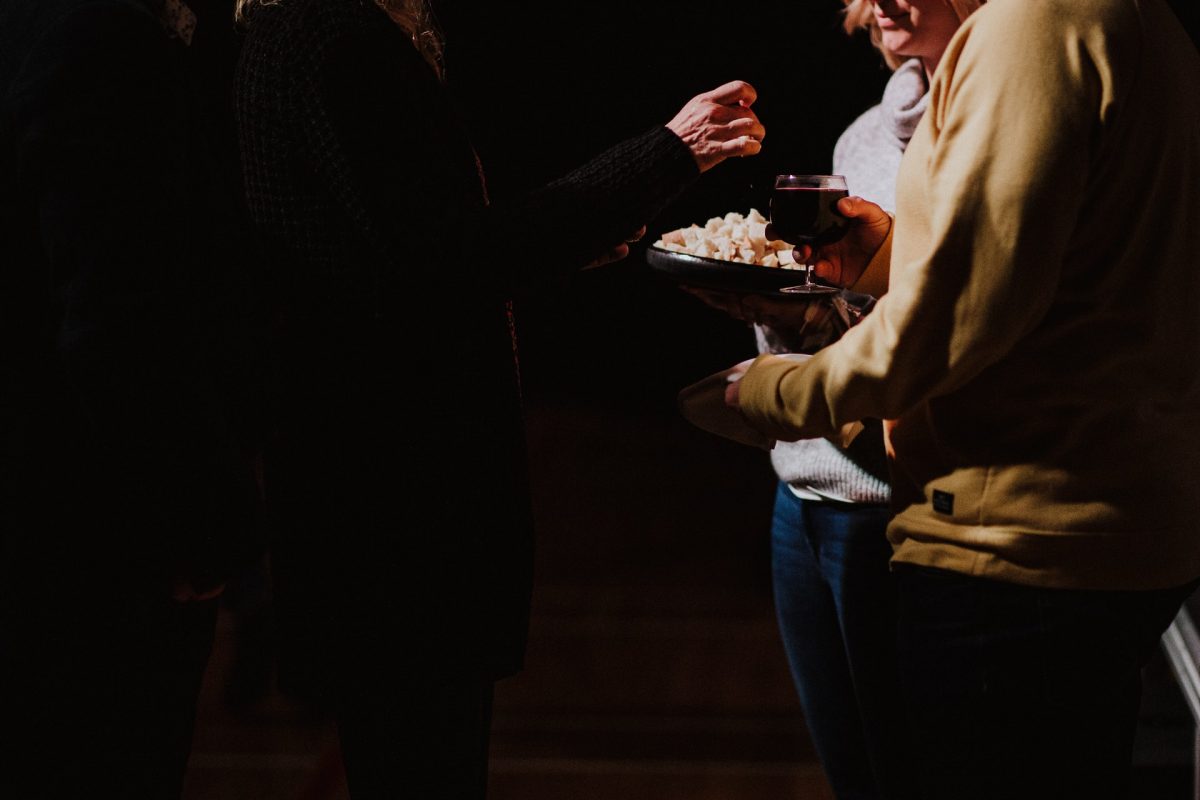Matt Sigler ~ Fragmented by Age: Liturgy & Families

Several weeks ago, as I was running errands, I heard my two-year old son exclaim from the backseat of our car, “Oh my God!” When I paused for a second to consider how to explain the third commandment to a toddler, he continued, “Heavenly Father, You have blessed our congregation with the joy and care of children…” This is the “Collect for Children” that we pray every Sunday in our congregation. What I thought was about to become a moment to teach my son about honoring God in our speech quickly turned into a lesson on the power of liturgy for me.
The predominance of age-level ministries in most of our churches has had a tragic consequence: we’ve become a church fragmented by age on Sundays. In many of our larger churches we can now choose from traditional, college, youth, and “kidz” services. Of course, there are many things that have contributed to this—not the least of which is the fallout from “the worship wars” which made style and taste the driving factors of Sunday worship—but even before this trend most Methodist churches considered childhood a limiting factor to participation in the Sunday service. There is much to be said for appreciating the different ways age influences our participation in worship, but I want to highlight what is lost particularly when we limit our children’s participation in our services.
Shaped by the Liturgy
Whether in a “high” or “low” church, all worship services shape the participant—some better, some worse. More specifically, even the most “free” church service has some pattern to its service and this pattern impacts us in ways we don’t often realize. I had no idea my son was absorbing the prayers we were praying each Sunday until one spilled off of his lips. The songs we sing, the prayers we pray, the bread we taste—even our gestures, all have latent power to form us as we encounter the risen Christ in worship. When we allow children to participate fully in the service we put them in the position to be shaped by the full gamut of the liturgy. This is not to say that there is no place for children’s church, but what is lost when our children our herded off to another room after a couple of hymns are sung?
Integral Members
Jesus reminds us that the kingdom belongs to those who are like children. Are we deprived of a visual reminder of this when our children are merely viewed as an appendage, or obstacle to worship? What does it communicate to our children when we send them out each Sunday? Ron Anderson observed in his case studies of two United Methodist congregations that: “Excluded from corporate worship as children, youth absented themselves from worship except for the occasional ‘Youth Sunday’ and disappeared completely as high school graduation approached and passed.”[1] He adds, “They learned their lessons well.”[2]
The presence of children in worship doesn’t always lend itself to the most solemn experience. We’ve all been there, and it never fails to happen at an important moment in the service: the screaming, squirming child; the heads turning, the eyes rolling, the whispers…the glares. Our churches should consider creative and even alternative opportunities for our children to engage in worship, but it should be done with an utmost concern that our gathered worshipping communities truly reflect what the Body of Christ looks like.
Childlikeness in Worship
Thomas O. Summers, the 19th century Methodist liturgist and theologian, once suggested that the truest test of a worship service was if children enjoyed it. To be clear, Summers was not a product of our modern, consumerist mindset. His question aims at what Jesus meant when he spoke of the link between the kingdom and children. We must not confuse the difference between immaturity and childlikeness in worship. The point is this: when we limit our children’s engagement in the Sunday service we also limit our own creativity and joy in worship. What would worship planning for “big church” look like if the litmus test was if children enjoyed it?
I’ve heard many people make remarks about how much their children teach them about God. Watching my son engage in worship has been no different for me. After he was born, my wife and I wrestled briefly with when he should be allowed to take Communion. We quickly reached the decision that we’d like him to partake as early as possible. While he obviously can’t articulate a theology of the Lord’s Supper, he has clearly been shaped by this means of grace.
Recently during the celebration of the Lord’s Supper, my son was still holding onto the bread when we returned to our pew. As the closing song began, I leaned down to whisper to him to eat the bread. Before I could, he lifted up his piece, as our congregation sang “thank You, thank You, for feeding us!” He sang the lines with everyone and then put the piece of bread in his mouth. It was a powerful moment for our little family.
Of course, there have also been times when he’s thrown the bread on the floor. The presence of children in our worship is often messy. It certainly isn’t predictable. And perhaps that is one of the greatest things our children can teach us in worship: God, by the Spirit, isn’t predictable, but as we come with child-like faith, the Triune God always meets us in our mess.
Featured image courtesy Priscilla Du Preez on Unsplash